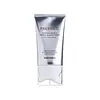What's inside
What's inside
 Key Ingredients
Key Ingredients

 Benefits
Benefits

 Concerns
Concerns

No concerns
 Ingredients Side-by-side
Ingredients Side-by-side

Water
Skin ConditioningGlycerin
HumectantButylene Glycol
HumectantHydrogenated Polydecene
EmollientCaprylic/Capric Triglyceride
MaskingDimethicone
EmollientHydrogenated Poly(C6-14 Olefin)
Emollient1,2-Hexanediol
Skin ConditioningNiacinamide
SmoothingPentaerythrityl Tetraethylhexanoate
EmollientGlyceryl Stearate
EmollientCyclopentasiloxane
EmollientCetearyl Olivate
PEG-100 Stearate
Sorbitan Olivate
EmulsifyingPanthenol
Skin ConditioningPolyacrylate-13
Polyglyceryl-10 Myristate
Skin ConditioningSodium Stearoyl Glutamate
CleansingCarbomer
Emulsion StabilisingDimethiconol
EmollientTromethamine
BufferingPolyisobutene
Centella Asiatica Extract
CleansingSynthetic Fluorphlogopite
Ethylhexylglycerin
Skin ConditioningAllantoin
Skin ConditioningTitanium Dioxide
Cosmetic ColorantPortulaca Oleracea Extract
Skin ConditioningAdenosine
Skin ConditioningPolysorbate 20
EmulsifyingDisodium EDTA
Chamomilla Recutita Flower Extract
MaskingSorbitan Isostearate
EmulsifyingVitex Agnus-Castus Extract
AstringentPhellinus Linteus Extract
Skin ConditioningArctium Lappa Root Extract
Skin ConditioningTin Oxide
AbrasiveHydrolyzed Collagen
EmollientTuber Melanosporum Extract
HumectantTourmaline
Ruby Powder
Skin ConditioningSapphire Powder
Pearl Powder
Nephrite Powder
AbrasiveDiamond Powder
AbrasiveAmethyst Powder
AbrasiveSodium Hyaluronate
HumectantCentella Asiatica Leaf Extract
Skin ConditioningCentella Asiatica Root Extract
Skin ConditioningHydroxypropyltrimonium Hyaluronate
Hydrolyzed Hyaluronic Acid
HumectantSodium Acetylated Hyaluronate
HumectantHyaluronic Acid
HumectantAsiatic Acid
Skin ConditioningAsiaticoside
AntioxidantSodium Hyaluronate Crosspolymer
HumectantPotassium Hyaluronate
Skin ConditioningMadecassic Acid
Skin ConditioningMadecassoside
AntioxidantParfum
MaskingWater, Glycerin, Butylene Glycol, Hydrogenated Polydecene, Caprylic/Capric Triglyceride, Dimethicone, Hydrogenated Poly(C6-14 Olefin), 1,2-Hexanediol, Niacinamide, Pentaerythrityl Tetraethylhexanoate, Glyceryl Stearate, Cyclopentasiloxane, Cetearyl Olivate, PEG-100 Stearate, Sorbitan Olivate, Panthenol, Polyacrylate-13, Polyglyceryl-10 Myristate, Sodium Stearoyl Glutamate, Carbomer, Dimethiconol, Tromethamine, Polyisobutene, Centella Asiatica Extract, Synthetic Fluorphlogopite, Ethylhexylglycerin, Allantoin, Titanium Dioxide, Portulaca Oleracea Extract, Adenosine, Polysorbate 20, Disodium EDTA, Chamomilla Recutita Flower Extract, Sorbitan Isostearate, Vitex Agnus-Castus Extract, Phellinus Linteus Extract, Arctium Lappa Root Extract, Tin Oxide, Hydrolyzed Collagen, Tuber Melanosporum Extract, Tourmaline, Ruby Powder, Sapphire Powder, Pearl Powder, Nephrite Powder, Diamond Powder, Amethyst Powder, Sodium Hyaluronate, Centella Asiatica Leaf Extract, Centella Asiatica Root Extract, Hydroxypropyltrimonium Hyaluronate, Hydrolyzed Hyaluronic Acid, Sodium Acetylated Hyaluronate, Hyaluronic Acid, Asiatic Acid, Asiaticoside, Sodium Hyaluronate Crosspolymer, Potassium Hyaluronate, Madecassic Acid, Madecassoside, Parfum
 Reviews
Reviews

Ingredients Explained
These ingredients are found in both products.
Ingredients higher up in an ingredient list are typically present in a larger amount.
1,2-Hexanediol is a synthetic liquid and another multi-functional powerhouse.
It is a:
- Humectant, drawing moisture into the skin
- Emollient, helping to soften skin
- Solvent, dispersing and stabilizing formulas
- Preservative booster, enhancing the antimicrobial activity of other preservatives
Allantoin is a soothing ingredient known for its protective and moisturizingg properties. Because of this, it is often added to products with strong active ingredients.
Studies show higher concentrations of this ingredient can promote wound healing.
Though it can be derived from the comfrey plant, allantoin is produced synthetically for cosmetic products to ensure purity.
Learn more about AllantoinButylene Glycol (or BG) is used within cosmetic products for a few different reasons:
Overall, Butylene Glycol is a safe and well-rounded ingredient that works well with other ingredients.
Though this ingredient works well with most skin types, some people with sensitive skin may experience a reaction such as allergic rashes, closed comedones, or itchiness.
Learn more about Butylene GlycolCarbomer is a polymer of acrylic acid. Its main role is to create a gel consistency.
A high amount of carbomer can cause pilling or balling up of products. Don't worry, most products contain 1% or less of carbomer.
Panthenol is a common ingredient that helps hydrate and soothe the skin. It is found naturally in our skin and hair.
There are two forms of panthenol: D and L.
D-panthenol is also known as dexpanthenol. Most cosmetics use dexpanthenol or a mixture of D and L-panthenol.
Panthenol is famous due to its ability to go deeper into the skin's layers. Using this ingredient has numerous pros (and no cons):
Like hyaluronic acid, panthenol is a humectant. Humectants are able to bind and hold large amounts of water to keep skin hydrated.
This ingredient works well for wound healing. It works by increasing tissue in the wound and helps close open wounds.
Once oxidized, panthenol converts to pantothenic acid. Panthothenic acid is found in all living cells.
This ingredient is also referred to as pro-vitamin B5.
Learn more about PanthenolSodium Hyaluronate is hyaluronic acid's salt form. It is commonly derived from the sodium salt of hyaluronic acid.
Like hyaluronic acid, it is great at holding water and acts as a humectant. This makes it a great skin hydrating ingredient.
Sodium Hyaluronate is naturally occurring in our bodies and is mostly found in eye fluid and joints.
These are some other common types of Hyaluronic Acid:
Learn more about Sodium Hyaluronate